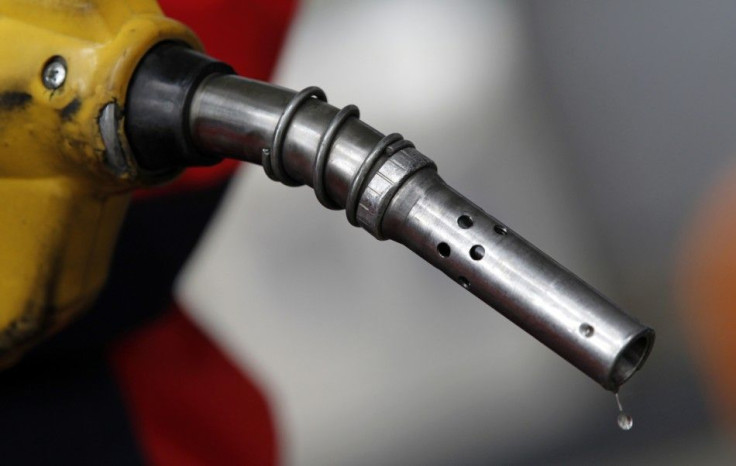Oil dives on risk retreat, year's gains erased

Oil tumbled as much as 6 percent on Thursday, with U.S. crude crashing through technical support to its lowest since February as mounting fears of a stalled economy set off a global race from riskier assets.
In one of the sharpest sell-offs since the financial crisis, oil prices fell as European bond buying and Japanese currency intervention fueled risk aversion across financial markets. In-line weekly U.S. jobs data failed to quell anxiety about slower growth that is already eroding oil demand.
U.S. crude turned negative for the year, while other commodities were also hammered as investors shed risky assets. In late trading, the dollar .DXY rose 1.52 percent against a basket of currencies and bonds rallied, while Wall Street dived nearly 5 percent, its biggest slump in more than two years.
"A range of commodities are under selling pressure as a general 'risk-off' flow continues from investors suddenly far less complacent regarding the strength of the global economy," said Tim Evans, analyst at Citi Futures Perspective in New York.
In London, ICE Brent for September delivery settled at $107.25 a barrel, falling $5.98, or 5.28 percent. It has slumped nearly 8 percent in two days, and now faces a test of key support at the 200-day moving average around $106.65.
U.S. crude for September delivery settled at $86.63 a barrel, sliding $5.30, or 5.77 percent, the biggest daily percentage loss since May 5 and the lowest close since February 18. Prices are now some 24 percent off their late April, 2-1/2-year high, crossing into technical bear market territory.
On a settlement basis, the year's gains for U.S. crude have been wiped out, as U.S. crude ended 2010 at $91.38.
Losses accelerated around midday after breaking below key support at the June triple-bottom low of $89.61, with technical analysts now looking toward an $85 target.
This week's moderate risk sell-off snowballed as investors fled risk after a series of dismal economic indicators. Barclays Capital slashing its oil demand growth forecast and other banks expected to follow suit.
"This week's sharp price decline has little to do with any oil-specific headlines but much to do with speculative liquidation, risk aversion, a major momentum reversal during the past week, trend line violation, confidence crisis, U.S. dollar strength and stock market weakness," said Jim Ritterbusch, president of Ritterbusch & Associates in Galena, Illinois.
U.S. weekly jobless claims data suggested a marginal improvement in the labor market, but not enough to ease fears about the economy. Traders are now awaiting Friday's release of U.S. jobs data July. Forecasters polled by Reuters expected nonfarm payrolls rose 85,000, after rising 18,000 in June.
TRADING ROBUST, GASOLINE LEADS, VOLUMES SPIKE
Trading activity was among the highest this summer, and options activity spiked as traders rushed to manage positions.
U.S. gasoline futures led the slump, with its premium over U.S. crude falling to the lowest in a month after Wednesday's stockpile data added to evidence that expensive fuel and a weak economy have reduced usage in the world's top user.
U.S. gasoline for September delivery closed at $2.7372 a gallon, down 19.41 cents, or 6.62 percent, front-month gasoline's biggest one-day percentage loss since a 7.6 percent fall on May 11. The day's low of $2.7280 was the lowest since the February 28 intraday low of $2.70. From Monday, the contract has fallen nearly 32 cents, or 10 percent.
U.S. gasoline's crack spread -- the profit refiners make per barrel after processing crude into motor fuel -- hit $28.05, the narrowest since 27.23 on July 6.
As crude oil broke below its weeks-long trading range, implied volatility in the options market spiked to the highest since the May 5 melt-down. The so-called Oil VIX index .OVX based on NYMEX options surged more than 26 percent. (Volatily chart: r.reuters.com/zar92s )
COMMODITIES SLIDE TOGETHER
Oil's decline was part of a broader slide on commodities as investors sold off on economic worries. The 19-commodity Reuters-Jefferies index .CRB, a global benchmark for the asset class, fell 2.8 percent, its biggest one-day decline since May 11.
Japan intervened in currency markets to protect its export-oriented economy, spending an estimated 1 trillion yen ($13 billion) to curb the strength of the yen.
The European Central Bank resumed buying government bonds after a four-month break and offered a new round of funding to commercial banks in response to a worsening euro zone debt crisis.
© Copyright Thomson Reuters 2024. All rights reserved.




















